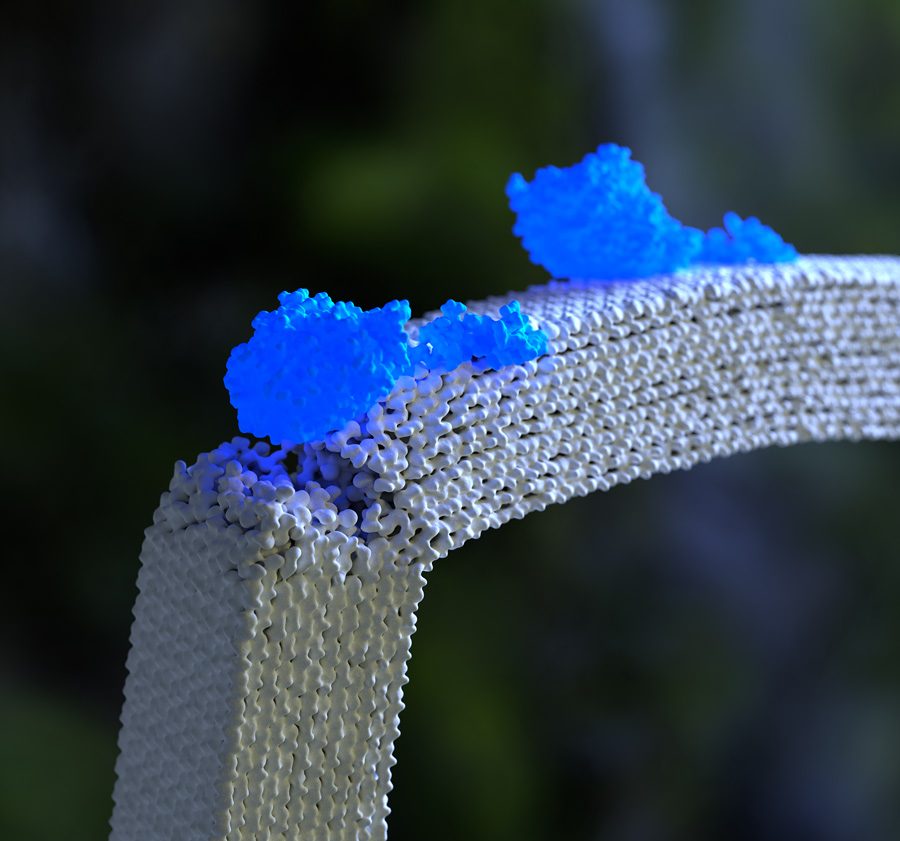Tag: nanomaterials
Nanosafety: Looking at the toxicology of nanomaterials

Nanomaterials are small particles that can be found everywhere, including in the air we breathe. Nanosafety is an emerging area of research dealing with the effect of nanomaterials on health and environment. Dr Ernesto Alfaro-Moreno of the International Iberian Nanotechnology Laboratory in Braga, Portugal, has been involved in continued research on the toxicology of nanomaterials. For his latest study, he […]
Read More… from Nanosafety: Looking at the toxicology of nanomaterials
Self-assembled nanomaterials fight viral outbreaks

Developing efficient ways to treat viral infections and control their spread in humans and animals has become a worldwide priority, especially since the COVID-19 pandemic. Traditional approaches to creating vaccines suffer from very long development and testing times which make them unsuitable for treating new viral infections. Dr Alaa F Nahhas at King Abdulaziz University, Kingdom of Saudi Arabia, shows […]
Read More… from Self-assembled nanomaterials fight viral outbreaks
Nanomedicine for the prevention and treatment of COVID-19 and other viruses

While many viral infections can be prevented through vaccination, it can take a long time for vaccinations to be developed for new diseases and many people object to themselves or children taking vaccines. There is a high need for quicker, readily available alternative treatments. Serial entrepreneur Professor Thomas J Webster thinks this could be achieved using nanomaterials. Webster’s research has […]
Read More… from Nanomedicine for the prevention and treatment of COVID-19 and other viruses
The importance of nuanced scientific communication in an age of rising distrust

Dr Karen Jacqueline Cloete is an interdisciplinary scientific researcher whose work spans a multitude of areas. She is affiliated to the UNESCO-University of South Africa Africa Chair in Nanosciences-Nanotechnology, and the Nanosciences African Network-iThemba LABS-National Research Foundation. As well as currently working at the rich intersection between nanotechnology, chemistry and biology, Dr Cloete asks broader questions about the relationship between […]
Read More… from The importance of nuanced scientific communication in an age of rising distrust
Nanotechnology and metal-organic frameworks for carbon capture

Greenhouse gases pose a major environmental threat that needs to be tackled. Nanotechnology offers great potential, with novel nanomaterials such as metal-organic frameworks (MOFs) being strong candidates for the adsorption of greenhouse gases. Dr Ocean Cheung, assistant professor at Uppsala University in Sweden, looked into a MOF sub-category, zeolite imidazolate frameworks (ZIFs), and examined how mixing raw materials for ZIF […]
Read More… from Nanotechnology and metal-organic frameworks for carbon capture
Bioinspired light-responsive materials for on-demand drug delivery

Polymer-based nanomaterials represent one of the most innovative and promising approaches in modern biomedical applications, including cancer and antibacterial therapy. They offer the ability to control the delivery of specific drugs within the human body. Their practical application, however, faces many challenges, for instance low tumour penetration in cancer or low drug internalisation in the case of antimicrobials. Professor Filippo […]
Read More… from Bioinspired light-responsive materials for on-demand drug delivery
Advanced chemiresistive materials for wireless sensor networks

When exposed to gases and vapours of certain chemicals in their surrounding environments, chemiresistive materials can change their electrical resistance, which makes them incredibly useful as sensors for air pollution. Through her work, Dr Esther Hontañón, a researcher at the Spanish Council of Research (CSIC) in Madrid, explores how the latest advances in materials science and 3D printing technology can […]
Read More… from Advanced chemiresistive materials for wireless sensor networks
Maths and honeycombs: Searching for the materials of the future

The nanotechnology revolution is fuelled by the versatility of nanomaterials. Changing a nanomaterial’s composition and structure alters its properties, rendering nanomaterials tailor-made for specific applications. Mathematical modelling guides researchers towards predicting desired behaviour prior to experimentation. Titus Masese of the National Institute of Advanced Industrial Science and Technology (AIST) and Godwill Kanyolo of the University of Electro-Communications (UEC), in Japan, […]
Read More… from Maths and honeycombs: Searching for the materials of the future
Electron emission patterning: A new path towards smaller devices?

The demand for smaller and more powerful electronic devices is ever growing in many sectors of today’s society. Current technology limits how small devices can be. To develop smaller devices, new materials and manufacturing techniques are needed. Ali Aliev and Ray Baughman of the Alan G. MacDiarmid NanoTech Institute have developed a non-contact dry patterning technique for carbon nanotubes. Their […]
Read More… from Electron emission patterning: A new path towards smaller devices?
Cellulose nanodefects: The key to biofuels and biomaterials of the future

Cellulose is a renewable polymer that can be used to produce biofuels and other bio-based materials. However, the potential of cellulose to displace petroleum-derived products had been limited by incomplete knowledge of its nanoscale characteristics. Recent research by Dr Peter Ciesielski and Dr Michael Crowley, both from the National Renewable Energy Laboratory, has advanced our understanding of nanoscale defects that […]
Read More… from Cellulose nanodefects: The key to biofuels and biomaterials of the future